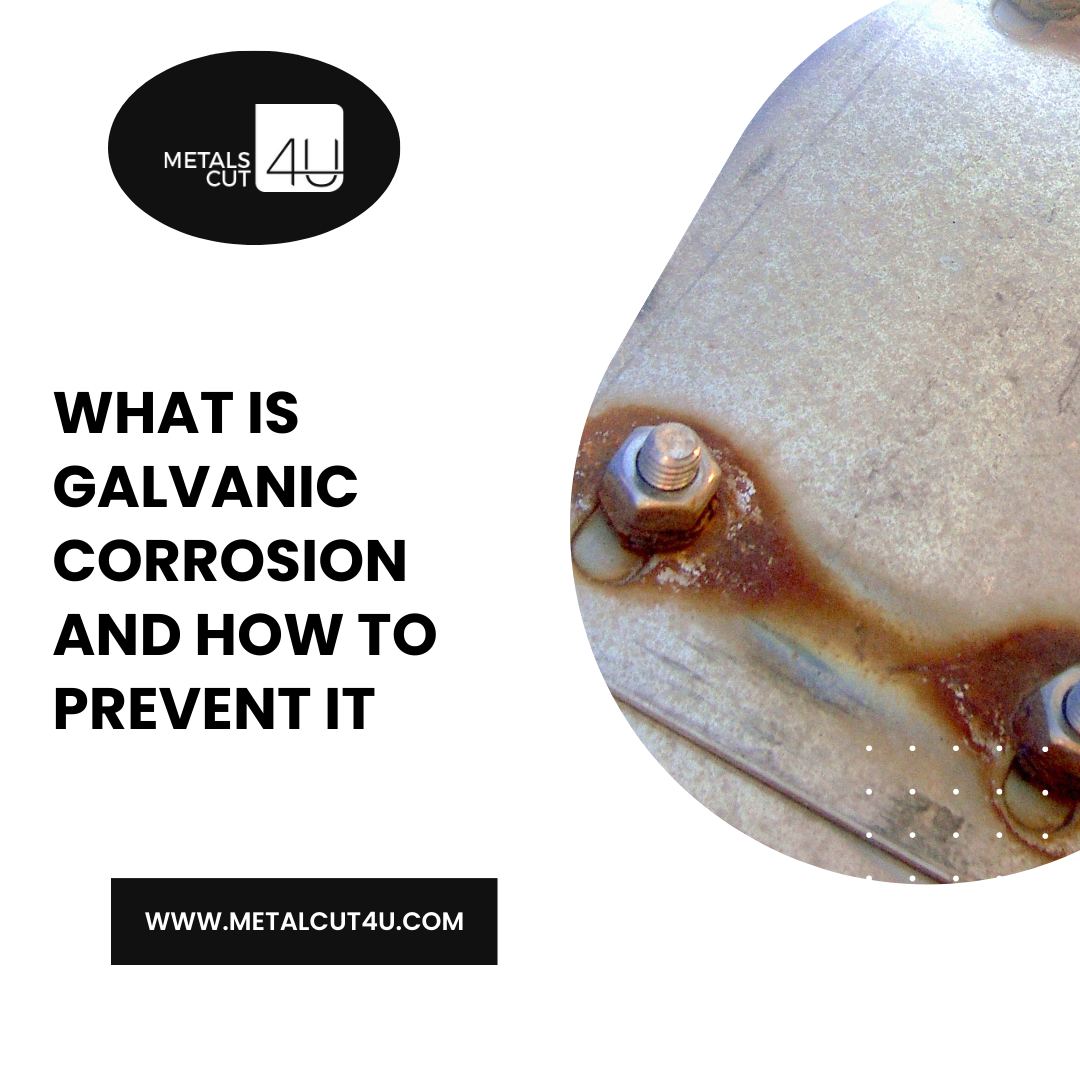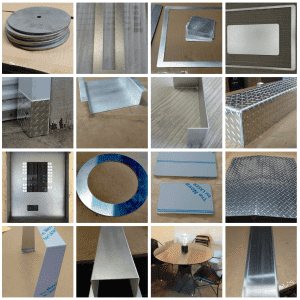What Is Galvanic Corrosion and How to Prevent It

Galvanic corrosion can unexpectedly lead to the deterioration of products, components, or assemblies. In some instances, it can even cause the collapse of an entire structure or equipment.
Galvanic corrosion, a type of metal rusting, occurs due to a complex chemical reaction. Understanding this process and learning how to prevent it is crucial for industries, construction, and everyday applications where metals interact.
In this detailed guide, we'll understand everything about galvanic corrosion, its causes, effects, and, most importantly, effective prevention strategies.
What Is Galvanic Corrosion
Galvanic corrosion, also known as bimetallic corrosion or dissimilar metal corrosion, occurs when two different metals come into contact in an electrolyte solution, resulting in accelerated corrosion of one metal at the expense of the other.
This corrosion process is driven by an electrochemical reaction where one metal acts as an anode, undergoing oxidation, while the other metal acts as a cathode, undergoing reduction. The transfer of electrons between the metals through the electrolyte leads to the degradation of the anodic metal, causing it to erode rapidly.
What Materials Cause Galvanic Corrosion?
Galvanic corrosion may occur when metals of differing compositions come into contact with an electrolytic environment. Common examples include:
-
Aluminum and stainless steel
-
Copper and steel
-
Zinc and steel
-
Brass and steel
Understanding the compatibility of metals is crucial in preventing galvanic corrosion. Metals that are corrosion-resistant with similar electrochemical potentials are less likely to cause galvanic corrosion when in contact with each other.
Understanding Environmental Components of Galvanic Corrosion
Several environmental factors can worsen galvanic corrosion, including:
Moisture: Water vapor in the air (moisture) acts as an electrolyte, facilitating the movement of charged particles (ions) between metals.
Salinity: Saltwater increases the conductivity of the electrolyte, accelerating galvanic corrosion and making marine environments particularly corrosive.
Temperature: Higher temperatures can accelerate corrosion rates by increasing the rate of galvanic corrosion reactions.
Pollution: Industrial pollutants or atmospheric contaminants can interact with metals, enhancing the corrosion process.
Oxygen levels: Higher levels of oxygen can intensify galvanic corrosion reactions, especially in submerged or humid environments.
pH levels: Extreme pH levels, either highly acidic or highly alkaline, can promote galvanic corrosion by altering the chemical properties of the electrolyte.
Presence of reactive gasses: Gaseous substances like sulfur dioxide or hydrogen sulfide can contribute to corrosion in specific environments.
Electrical conductivity of the environment: Conductive environments, such as those with high mineral content, can worsen galvanic corrosion.
Microbial activity: Certain microorganisms in soil or water can accelerate corrosion processes by promoting the formation of corrosive byproducts.
Atmospheric conditions: Exposure to elements such as humidity, rainfall, and airborne pollutants can influence the rate and severity of galvanic corrosion.
Galvanic Corrosion Solutions
Preventing galvanic corrosion requires a multi-faceted approach. Some practical solutions include:
Choosing Materials with Comparable Corrosion Potentials: When selecting metals, it's crucial to choose ones with similar electrochemical potentials. This helps lower the chances of galvanic corrosion.
Insulating The Two Metals From Each Other: If you're using different metals, it's wise to keep them apart. You can do this by using materials that don't conduct electricity or by adding coatings. This stops the metals from touching directly, which helps prevent corrosion.
Using Corrosion Inhibitors: To shield metal surfaces from corrosion, you can apply special chemicals or coatings. These work to stop or slow down the corrosion process, keeping the metal protected.
Applying Coatings to Both Materials: Adding protective coatings like paints, varnishes, or electroplating to both metals creates a barrier. This barrier shields the metals from harmful elements that could cause corrosion.
Installing Sacrificial Anodes: Sacrificial anodes are made from a metal that's more reactive than the one you want to protect. By connecting these anodes to the structure, they corrode instead of the main metal, sacrificing themselves to prevent corrosion.
Coatings and Non-Conductive Barriers: By applying insulating coatings or materials between different metals, you can stop galvanic corrosion. These barriers interrupt the transfer of electrons, preventing corrosion from occurring.
Proper Maintenance and Inspection: Regular maintenance and inspection of metal structures can help identify any signs of corrosion. The risk of corrosion can be minimized by promptly addressing any issues such as scratches, cracks, or damage to protective coatings.
Controlling Environmental Factors: Controlling environmental factors such as temperature, humidity, and exposure to corrosive substances can significantly reduce the likelihood of corrosion. Implementing measures such as climate control systems, proper ventilation, and avoiding exposure to harsh chemicals can help protect metal surfaces from corrosion damage.
Galvanized Steel Protection: Use galvanized steel coated with a zinc layer to protect against corrosion. The zinc acts as a sacrificial anode, corroding in place of the steel, thus providing an additional layer of defense against rust and galvanic corrosion. Regular inspection and maintenance of galvanized coatings are essential to ensure their effectiveness in preventing corrosion over time.
Understanding the causes, effects, and preventive measures against rust on galvanized steel can help protect your investments, ensure structural integrity, and save you from costly repairs.
CONFIGURE IN 4 EASY STEPS
How to Avoid and Prevent Galvanic Corrosion
Implementing preventive measures is essential to avoid galvanic corrosion:
Regular Maintenance: It's crucial to inspect metal structures frequently for any signs of corrosion. Addressing issues promptly can prevent corrosion from spreading and causing extensive damage.
Proper Design: When designing structures and equipment, consider galvanic corrosion prevention from the start. This includes careful material selection, insulation between dissimilar metals, and other preventive measures integrated into the design.
Monitor Environmental Conditions: Stay vigilant about environmental factors that can accelerate galvanic corrosion, such as exposure to saltwater, high humidity, or harsh chemicals. Monitoring these conditions allows for proactive measures that can help mitigate corrosion risks.
Educate Personnel: Ensure that personnel are trained and informed about the risks associated with galvanic corrosion. Educate them on preventive measures and proper maintenance techniques to safeguard against corrosion-related damage.
Implement Cathodic Protection: Cathodic protection systems, such as impressed current or sacrificial anode systems, can be installed to actively prevent galvanic corrosion by controlling the flow of electrical current between metals.
Regular Cleaning and Surface Treatment: Keeping metal surfaces clean and applying protective surface treatments, such as passivation or corrosion-resistant coatings, can help prevent the onset of galvanic corrosion by creating a barrier against corrosive agents.
Choose MetalsCut4U for Custom Metal Solutions
MetalsCut4U understands the importance of addressing galvanic corrosion to ensure the durability and quality of your custom metal products. With our wide range of offerings, including 14 different shapes and forms that we cut, bend, and weld to your specifications, you can choose the best custom sheet metal fabrication for your needs.
We are committed to delivering high-quality, customized galvanized metal that stands the test of time. With our expertise and dedication to excellence, you can trust us for reliable products that exceed your expectations.
Contact us today at 440-822-6381 for precision-crafted metal solutions.
FAQs
What is the method of preventing galvanic corrosion?
Preventive methods include choosing compatible materials, insulating metals, using corrosion inhibitors, applying coatings, and installing sacrificial anodes.
What is the best coating to prevent galvanic corrosion?
Various coatings such as paints, varnishes, and electroplating can be effective in preventing galvanic corrosion, depending on the specific application and environmental conditions.
Does zinc prevent galvanic corrosion?
Zinc can serve as a sacrificial anode, protecting other metals from galvanic corrosion by corroding in their place.
Can paint prevent galvanic corrosion?
Yes, paint can act as a barrier against corrosive elements, helping to prevent galvanic corrosion by isolating metals from each other and the surrounding environment.
What spray prevents galvanic corrosion?
There are specialized sprays available that contain corrosion inhibitors or protective coatings designed to prevent galvanic corrosion.
How long does it take for galvanic corrosion to occur?
The time it takes for galvanic corrosion to occur depends on various factors, including the specific metals, environmental conditions, and the presence of an electrolyte.
